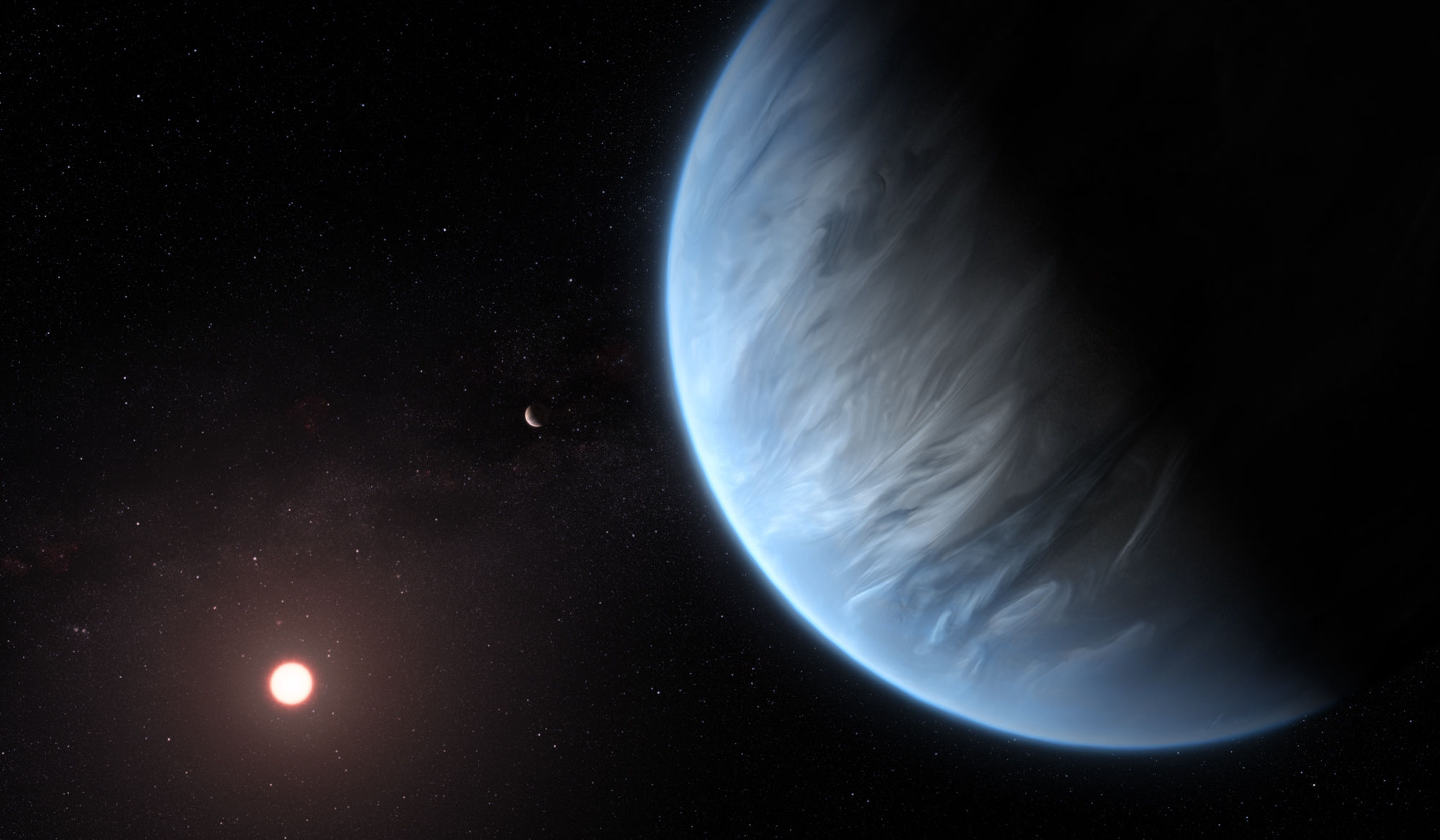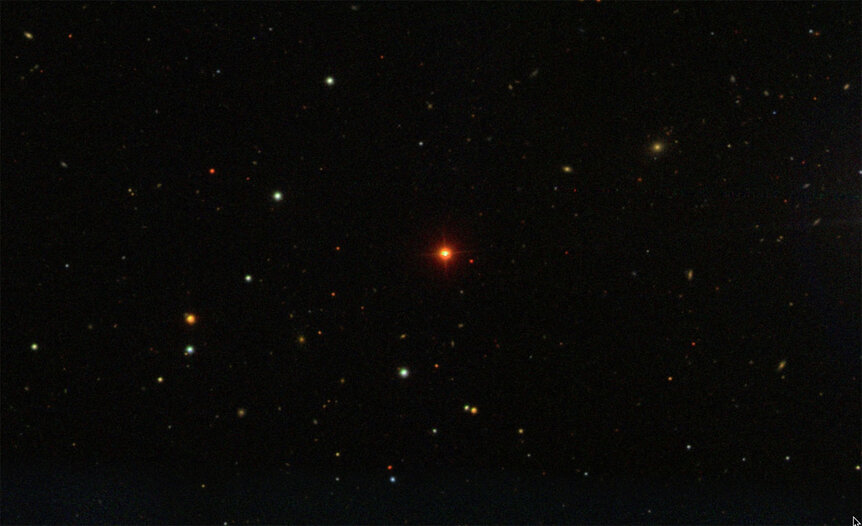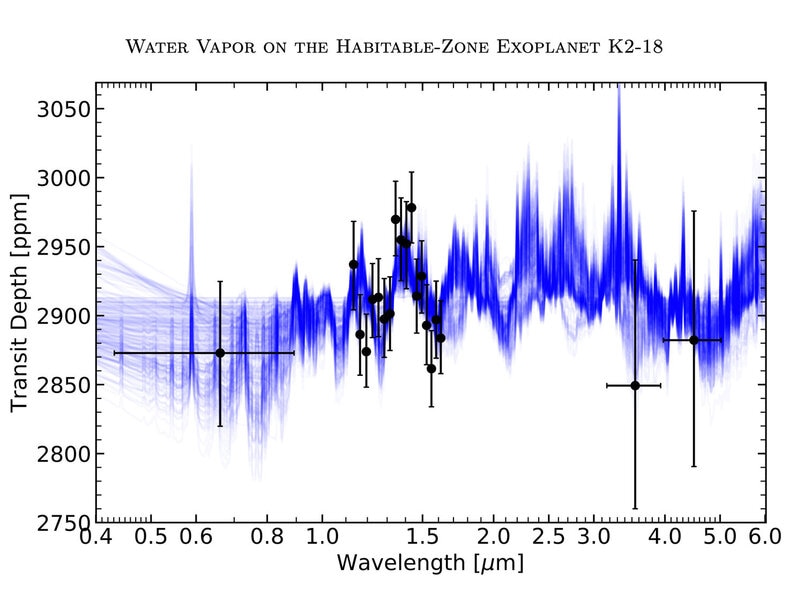Create a free profile to get unlimited access to exclusive videos, sweepstakes, and more!
Water vapor detected in the atmosphere of a temperate mini-Neptune exoplanet

Astronomers have made a very interesting discovery: For the first time, water vapor has been detected in the atmosphere of an exoplanet that lies in the habitable zone for its star.
The detection looks pretty good to me, and this has some potentially exciting implications, but first things first:
<ahem>
NO, THIS DOES NOT MEAN THE PLANET IS EITHER EARTH-LIKE OR HABITABLE.
Clear enough? The quick-and-dirty is that this planet is more like Neptune than Earth, a massive world with a thick atmosphere. When this news broke yesterday I saw a lot (a lot) of misinformation out there, mostly just confusion or errors in understanding the science coupled with breathless headlines designed to get clicks.
Here’s the actual deal.
The star K2-18 is a red dwarf, smaller, cooler, and much fainter than the Sun. It's about 120 light years away, which is close as stars go (which isn't too surprising; it's hard to observe red dwarfs much farther away than that because they're so dim).
There is at least one planet orbiting it, called K2-18b (some observations strongly indicate there may be a second planet orbiting the star as well). Using the transit method, K2-18b was found to have a size of 2.7 times Earth's diameter, and using the reflex velocity method a mass of 8.6 times Earth's mass. This makes it bigger than Earth but smaller than Neptune; most exoplanets found are in this size range.
Planets up to about twice Earth's diameter are called super-Earths, but when they get bigger than that they tend to have thick atmospheres more like gas giants, so we call those mini-Neptunes (for more about this distinction, my friend and fellow science communicator Emily Lakdawalla posted a fantastic thread on Twitter about it). Doing the math, the density of this planet is about 2.5 grams per cubic centimeter, right in between Earth’s density (5.5) and Neptune’s (1.6). So it's likely to have a rocky/metal core and a thick atmosphere around it.
What makes this planet more interesting than average is its location: At 21 million kilometers from its star, it's getting about the same amount of sunlight from its host star (which, remember, is quite a bit fainter and cooler than the Sun) as Earth does. That means it's in the star’s habitable zone, where liquid water could exist.
Stress "could." Mind you, technically Venus and Mars are both in the Sun's habitable zone, and stepping out on the surface of either would kill you dead quite rapidly. Hence my earlier announcement.
What becomes so very interesting about a planet like this is that it has a thick atmosphere and it transits its star (meaning it passes directly between us and the star, creating a mini-eclipse). When it transits, starlight passes through the upper layers of its atmosphere on the way to Earth. That's a big opportunity for astronomers, because different atoms and molecules in the air there absorb very specific (wavelengths) colors of light. If we observe the planet as it transits, those substances will block those colors, making them detectable!
That's what a team of astronomers did. Using Hubble, they observed K2-18b transiting the star 8 different times, looking for changes in the spectrum due to any gases. Not too surprisingly, they found the atmosphere was mostly hydrogen, consistent with it being more like Neptune than Earth. But, moreover, they saw something else that was intriguing: They found evidence of water vapor in the planet's atmosphere.
That's very cool! Mind you, the presence of water vapor has been seen in other exoplanets (like say this one), but this is the first time it's been seen in an exoplanet in its star's habitable zone. Given the temperature at the top of the clouds, the authors find it's possible that the water could condense into droplets and rain downward. Whether they make it down to any surface is another matter entirely (if it even has a surface; gas giants don't).
But the more important aspect of all this is that these observations show that finding water vapor in the atmospheres of temperate planets is possible. This planet is large and has a thick atmosphere, making it easier, but in principle planets the same size and temperature as Earth could be analyzed this way as well. We like to hear about water vapor because life on Earth depends on it — and to be honest it does make a great medium for life to develop, so if we are looking for signatures of life on other planets, having water in its atmosphere is a decent place to start.
This will also get easier as our telescopes grow larger, like with the James Webb Space Telescope that will launch eventually. We're actually pretty good at finding planets, and it's clear we're getting better at characterizing them.
That's what I find exciting. We're still in the early stages of this whole exoplanet business, and there's a whole lot of future ahead of us.





























